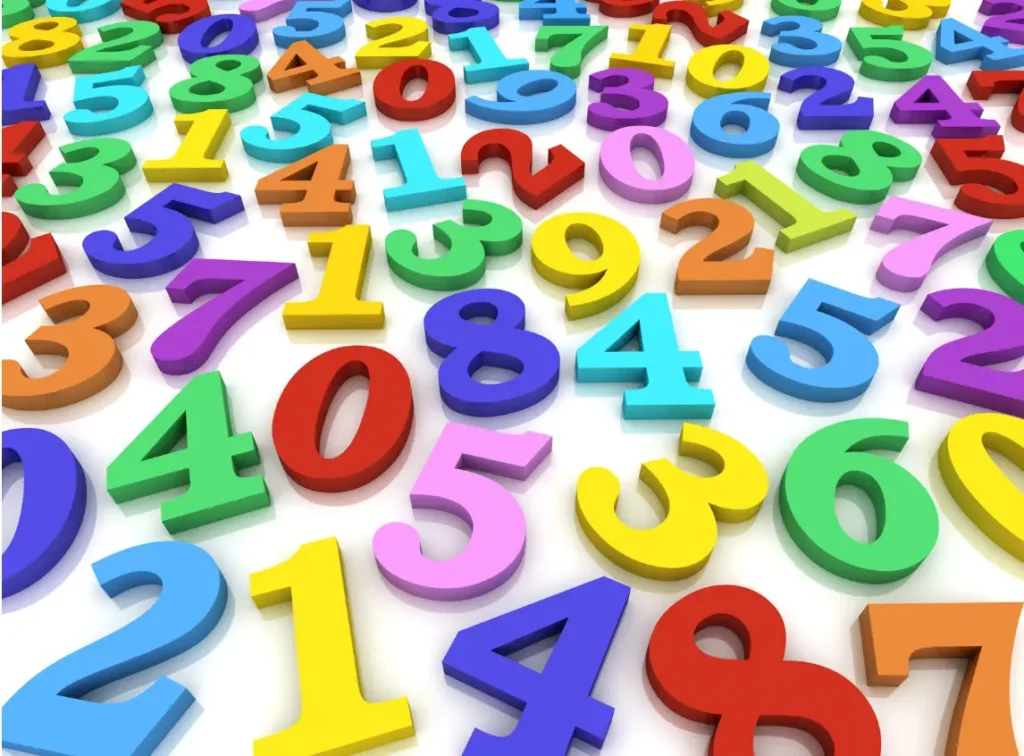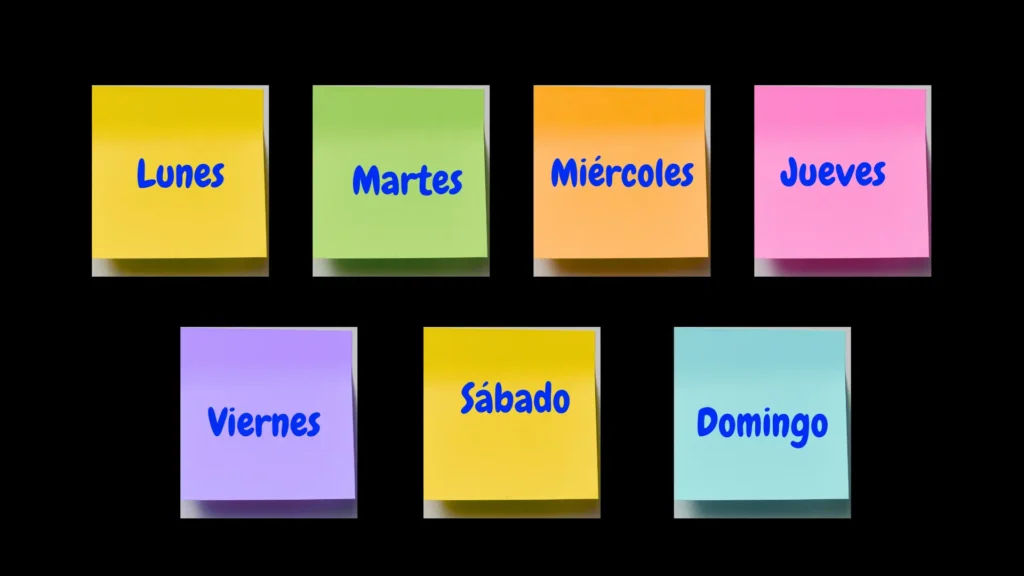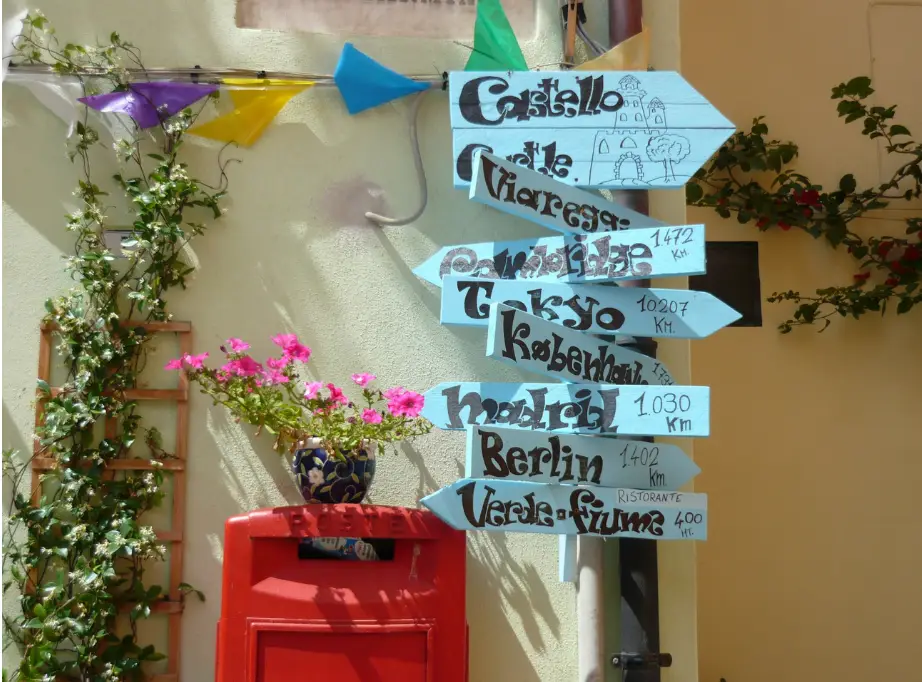Can you imagine being able to hold a basic conversation in Spanish knowing only 100 words? In this article, you’ll discover exactly what those magic words are that will transform your Spanish learning experience from confusing to exciting. From the most essential Spanish colors to how to speak Spanish with confidence in everyday situations, this guide will take you step-by-step through the basic Spanish you really need to communicate from day one. You’ll learn not only the words, but when and how to use them in real contexts, including the months in Spanish, numbers 1-10 in Spanish, and phrases that will make the difference between sounding like a lost tourist or someone who is truly learning the Spanish language.
My Story: From Panic to “I Finally Understand!” in 30 Days
“I don’t speak Spanish,” I whispered in panic when my Mexican roommate asked me a simple question about where the sugar was.
It was my third week living in Barcelona. Despite having studied some Spanish language in Mexico, every day I faced the same problem: I understood some single words, but I could not form coherent sentences. My vocabulary was like a jigsaw puzzle with missing pieces.
The crisis came when Marco, my Italian roommate, organized a dinner party with Spanish friends. Throughout the evening, I could only smile and nod as everyone chatted animatedly. I felt like a spectator in my own life.
That night, as I listened to Spanish music and tried to decipher the lyrics, I had a revelation: I didn’t need to learn thousands of Spanish words to communicate. I needed the right words – the ones that came up over and over again in real conversations.
I decided to create my own experiment: identify the 100 most frequent Spanish words in my daily life and master them completely in 30 days. Not mechanical memorization, but constant practical use.
I tried very hard, practicing every moment of the day. Starting in the morning, I would try to talk to the mailman, to the apartment neighbor, to the cashier at the supermarket, and at the bar to the bartender. Every interaction was an opportunity to use my essential vocabulary.
A month later, something magical happened. During a similar dinner, I was able to actively participate in the conversation. I did not speak perfectly, but I could express ideas, ask questions and understand the answers. My colleagues noticed the change immediately.

What was the secret?
I understood that learning Spanish is not really about quantity, but about frequency and relevance. These 100 words appeared in 80% of my daily conversations. Mastering them gave me the solid foundation to build everything else.
Want to replicate this transformation? I share with you these 100 Spanish words organized into the exact categories that changed my experience, with real examples of how I used them to go from silent spectator to active participant in Spanish life.
📋 Essential Vocabulary Index
Table of Contents
1. Immediate Survival Words (10 words)
These are the Spanish words you will need from the first moment you set foot in a Spanish-speaking country.

The Words That Will Save You:
1. “Hola” (Hello)
To say hello at any time of the day, no matter what time it is.
2. “Gracias” (Thank you)
Spaniards value politeness highly – use it more than you think is necessary.
3. “Por favor” (Please)
Immediately improve how you are received by the locals in any situation
4. “Perdón” (Excuse me/Sorry)
To apologize or call attention politely – alternative: “ Disculpe”, Excuse me (more formal).
5. “Sí” / “No” (Yes/No)
The basis of any communication – remember that “Yes” is accented with an “i”.
6. “¿Habla inglés?” (Do you speak English?)
Always ask in Spanish before switching to English as a sign of respect.
7. “No entiendo” (I don’t understand)
Better to admit you don’t understand than to pretend – usually followed by “¿Puede repetir?” ,Can you repeat?
8. “¿Cuánto cuesta?” (How much does it cost?)
Essential for any purchase or transaction – variant: “¿Cuánto vale?” , How much is it worth? (more colloquial)
9. “¿Dónde está…?” (Where is…?)
Structure: Where is it + place you are looking for? Example: “¿Dónde está el baño?” (Where is the bathroom?)
10. “Ayuda” (Help)
For situations requiring immediate assistance – polite version: “¿Me puede ayudar?” (Can you help me?)
True story:
“On my second day in Barcelona, I needed to buy a metro card. With just these 10 words I was able to approach the clerk and say, ‘Hello, do you speak English? I don’t understand. How much does it cost?’( Hola , habla ingles? No entiendo. Cuanto cuesta?) The clerk was not only helpful, but appreciative of my effort to use basic Spanish. That small interaction gave me the confidence to keep trying to speak Spanish at every opportunity.”
2. Essential Numbers - 1 to 10 in Spanish (11 words)
Numbers are essential for prices, directions, schedules and quantities in your daily life.

Numbers 1 to 10:
1. “Uno” (One)
For counting, prices and addresses – example: “Calle Mayor, número uno” (Calle Mayor, number one).
2. “Dos” (Two)
Useful for ordering quantities – example: “Dos cervezas, por favor” (Two beers, please).
3. “Tres” (Three)
For prices and times – example: “Son las tres” o “Tres euros” (It’s three o’clock” or “Three euros)
4. “Cuatro” (Four)
Common in directions and quantities – example: “Una mesa para cuatro personas” (Table for four persons) .
5. “Cinco” (Five)
Very useful for banknotes and coins – example: “Un billete de cinco euros” ( A five euro banknote)
6. “Seis” (Six)
For medium-sized times and quantities – example: “A las seis de la tarde” (At six o’clock in the evening)
7. “Siete” (Seven)
For directions and times – example: “Me levanto a las siete” (I get up at seven o’clock).
8. “Ocho” (Eight)
Common in working hours – example: “Trabajo de ocho a cinco” (I work from eight to five)
9. “Nueve” (Nine)
For Spanish evening hours – example: “La cena es a las nueve” (dinner is at nine o’clock).
10. “Diez” (Ten)
For round quantities and prices – example: “Diez minutos a pie” (Ten minutes walk)
11. “Cero” (Zero)
Essential for telephone numbers and addresses – example: “Piso cero” (Flat zero).
My experience with numbers:
“The 1 to 10 in Spanish was my salvation at La Boqueria market in Barcelona. I was able to order ‘two apples’, ‘three oranges’ and ‘five tomatoes’ ( tres naranjas, cinco tomates) just by pointing and using the numbers. The vendor smiled and started teaching me the names of the fruits. Numbers are your first gateway to learning Spanish in a practical way.”
Practical tip: Practice counting numbers by counting everyday objects: steps, cars in the street, people in a coffee shop. In one week you will completely master 1 to 10 in Spanish.
Time: Days, Months and Moments (15 words)
Time is of the essence for planning, meeting people and understanding schedules.

Days of the Week in Spanish:
12. “Lunes” (Monday)
,The day that Spaniards “go back to routine” – example: “El lunes tengo trabajo” , On Monday I have work.
13. “Martes” (Tuesday)
Common day for medical appointments in Spain – example: “Tuesday I have a doctor”
14. “Miércoles” (Wednesday)
Mid-week” day – example: “Los miércoles voy al gimnasio”, – Wednesdays I go to the gym.
15. “Jueves” (Thursday)
Popular day for going out in Spain – example: “Los Jueves hay ambiente nocturno” – Thursdays there is a nightlife scene.
16. “Viernes” (Friday)
Start of the Spanish weekend – example: “Viernes por la noche there is a fiesta”
17. “Sábado” (Saturday)
Shopping and activity day – example: “Los sábados duermo hasta tarde” – I sleep late on Saturdays.
18. “Domingo” (Sunday)
Family and rest day – example: “Domingo, paella en familia” – Sunday, paella with the family.

Essential Months in Spanish:
19. “Enero” (January)
New year month and resolutions – example: “En enero empiezo español” – In January I start Spanish.
20. “Julio” (July)
Spanish vacation month – example: “Julio es muy caluroso” – July is very hot.
21. “Agosto” (August)
Vacation month par excellence – example: “En agosto Madrid se vacía” – In August Madrid is empty.
22. “Diciembre” (December)
Christmas and celebration month – example: “Diciembre tiene muchas fiestas” – December has a lot of parties.
Moments of the Day:
23. “Hoy” (Today)
For immediate plans – example: “Hoy voy al supermercado” – Today I am going to the supermarket.
24. “Mañana” (Tomorrow/Morning)
Doble significado según contexto – ejemplo: “Mañana por la mañana” (Tomorrow morning)
25. “Noche” (Night)
For evening plans – example: “Esta noche” o “Buenas noches” – Tonight or Good night.
Time Expressions:
26. “Ahora” (Now)
Para acciones en el momento presente – ejemplo: “Ahora no puedo” (I can’t right now)
My experience with time:
“When I was trying to meet my international roommates, mastering the months in Spanish and days of the week in Spanish was crucial. ‘El sábado por la noche’ or ‘el viernes en agosto’ became expressions I used constantly. Especially ‘hoy’ because we were always making plans for the same day.”
Cultural usage: In Spain, “la mañana” goes until 14:00, “la tarde” until 20:00, and “la noche” thereafter. Understanding this will help you speak Spanish with more cultural accuracy.
4. Spanish Colors You'll Use Every Day (8 words)
Colors in Spanish are essential for describing objects, clothing, food and directions.

The Fundamental Colors:
27. “Rojo” (Red)
For addresses and eye-catching objects : “El coche rojo” o “Semáforo en rojo” – The red car or Red traffic light.
28. “Azul” (Blue)
Invariable in gender (the blue shirt) – example: “El cielo azul” o “Ojos azules” – The blue sky or Blue eyes.
29. “Verde” (Green)
For nature and traffic lights – example: “La hierba verde” o “Verde significa seguir” – Green grass or Green means follow.
30. “Amarillo” (Yellow) (Yellow)
For cabs and signs – example: “El sol es amarillo” o “Taxi amarillo” – The sun is yellow or Yellow cab.
31. “Negro” (Black)
Color widely used in Spain for clothing – example: “Pantalones negros” o “Café negro” – Black pants or Black coffee.
32. “Blanco” (White)
For the famous “white villages” – example: “Camisa blanca” o “Vino blanco” – White shirt or White wine.
33. “Rosa” (Pink)
For flowers and women’s clothing – example: “Flores rosas” o “Vestido rosa” – Pink flowers or Pink dress.
34. “Marrón” (Brown)
For hair and natural objects – example: “Pelo marrón” o “Mesa marrón” – Brown hair or Brown table.
My experience with colors:
“The colors in Spanish saved me when I lost my suitcase at the Madrid airport. I was able to describe exactly: ‘It’s a large, black suitcase with a red tag.’ (Es una maleta grande, negra, con una etiqueta roja) . The employee understood perfectly and we found it in minutes. Colors are universal descriptives that help you speak Spanish when you don’t know more specific words.”
Practical tip: Practice describing your clothes every morning in Spanish: “Today I’m wearing a blue shirt and black pants”(Hoy llevo una camisa azul y pantalones negros). In a week, the colors in Spanish will be automatic.
5. Family and People (8 words)
Family and friend relationships are universal topics of conversation.

Immediate Family:
35. “Madre” / “Mamá” (Mother/Mom)
“Mother” is formal, “mom” is affectionate – example: “Mi mamá vive en México” – My mom lives in Mexico.
36. “Padre” / “Papá” (Father/Dad)
“Father” formal, “dad” informal – example: “Mi papá trabaja aquí” – My dad works here.
37. “Hermano” / “Hermana” (Brother/Sister)
Changes according to gender – example: “Mis hermanos” – My siblings (includes both genders)
38. “Hijo” / “Hija” (Son/Daughter)
To talk about offspring – example: “¿Tienes hijos?” – Do you have any children? (common question)
People in General:
39. “Amigo” / “Amiga” (Friend)
Very important in Spanish culture – example: “Este es mi amigo Carlos” – “This is my friend Carlos.
40. “Hombre” (Man)
To describe gender masculine – example: “He’s a tall man” (always with respect) Es un hombre alto
41. “Mujer” (Woman)
Po describe female sex– example: “The woman in the red dress”. La mujer del vestido rojo.
42. “Niño” / “Niña” (Child/Boy/Girl)
For minors – example: “I have two children” ,“Child” can also be a term of endearment.”Tengo dos niños”.
Family history:
“During my stay in Spain, living in shared apartments forced me to constantly talk about family. ‘I have two brothers,’ ‘My mother lives in Mexico,’ ‘This is my friend from Barcelona.’ (Tengo dos hermanos’, ‘Mi madre vive en México’, ‘Este es mi amigo de Barcelona). These words about family were my gateway to deeper conversations and creating real friendships with Spaniards and internationals.”
6. Places and Addresses (12 words)
Essential words to get around and find your way around any Spanish-speaking city.

Basic Places:
43. “Casa” (House/Home)
Your personal refuge – example: “Voy a casa” – I’m going home, or “Mi casa es grande” – My house is big.
44. “Trabajo” (Work/Job)
Your work activity – example: “Voy al trabajo” – I’m going to work or “Mi trabajo está cerca” – My work is nearby.
45. “Escuela” (School)
For studies and learning – example: “Estudio en una escuela de español” – I study at a Spanish language school.
46. “Hospital” (Hospital)
Important for emergencies – example: “¿Dónde está el hospital más cercano?” – Where is the nearest hospital?
47. “Banco” (Bank)
For financial matters – example: “Busco un banco para cambiar dinero” – I am looking for a bank to exchange money.
48. “Supermercado” (Supermarket)
For everyday shopping – example: “Voy al supermercado a comprar comida” – I’m going to the supermarket to buy groceries.
Addresses:
49. “Aquí” (Here)
Your current location – example: “Estoy aquí” – I’m here (accompanied by gestures)
50. “Allí” (There)
To point to locations – example: “El banco está allí” – The bank is over there (pointing).
51. “Derecha” (Right)
Essential for orientation – example: “Gira a la derecha en el semáforo” – Turn right at the traffic light.
52. “Izquierda” (Left)
Complements “right” – example: “A la izquierda del supermercado” – To the left of the supermarket.
53. “Cerca” (Near/Close)
For short distances – example: “Está muy cerca” o “Cerca de la estación” – It is very close or Near the station.
54. “Lejos” (Far)
For long distances – example: “¿Está lejos?” – Is it far? (to calculate times)
My experience :
“The first few days in Barcelona I was constantly getting lost. Learning ‘derecha’, ‘izquierda’, ‘cerca’ y ‘lejos’ (right’, ‘left’, ‘near’ and ‘far’) allowed me to ask for directions and understand the basic answers. ‘The metro is near, to the right’ became the kind of instruction I could follow without a problem. These Spanish location words give you immediate independence.”
Basic Food and Drink (12 words)
Food is fundamental for survival and also for cultural connection.

Basic Foods:
55. “Pan” (Bread)
Present in all Spanish foods – example: “A loaf of bread please” “Una barra de pan por favor”
56. “Agua” (Water)
The most basic drink – example: “Un vaso de agua, por favor” – A glass of water, please.
57. “Leche” (Milk)
For breakfasts and drinks – example: “Café con leche” (very Spanish) – Coffee with milk or “Un vaso de leche fía” – A glass of cold milk.
58. “Carne” (Meat)
To specify preferences – example: “¿Tiene platos con carne?” – Do you have meat dishes?
59. “Pescado” (Fish)
Very common on the Spanish coast – example: “Prefiero pescado a carne” – I prefer fish to meat.
60. “Verduras” (Vegetables)
For healthy options – example: “Una ensalada de verduras” – A vegetable salad.
Beverages:
61. “Café” (Coffee)
Drink Spanish drink par excellence – example: “Un café, por favor” – A coffee, please (excuse for socializing)
62. “Cerveza” (Beer)
Very popular in Spain – example: “Una cerveza fría” – A cold beer- (social environment)
63. “Vino” (Wine)
Spain has excellent wines – example: “A glass of Red wine, please” Un vaso de Vino tinto
Meals of the Day:
64. “Desayuno” (Breakfast)
First meal of the day – example: “¿A qué hora es el desayuno?” – What time is breakfast?- (in hotels)
65. “Comida” (Lunch/Food)
The main meal of the day in Spain – example: “La comida es a las dos” – Lunch is at two o’clock –
66. “Cena” (Dinner)
Late Spanish dinner – example: “La cena es a las nueve” – Dinner is at nine o’clock- (very late for foreigners).
My gastronomic experience:
“In my first bar in Barcelona, I only knew how to order ‘a coffee and bread’. Little by little I added ‘beer’, ‘water’, and ‘fish’ ‘(cerveza’, ‘agua’, y ‘pescado’). When I was finally able to order ‘a beer, grilled fish and vegetables,’ (una cerveza, pescado a la plancha y verduras) the waiter commented that I spoke better Spanish than some tourists who had been in the city for weeks. Food is the most delicious gateway to learning Spanish.”
7. Emotions and States (8 words)
Expressing how you feel is fundamental to authentic communication.

Physical States:
67. “Cansado” / “Cansada” (Tired)
Change according to your gender – example: “ Estoy muy cansado” I am very tired.tired”(after a long day)
68. “Hambre” (Hunger)
It is used with “tener”, not “estar” – example: “Tengo hambre” – I’m hungry – (to ask for food).
69. “Sed” (Thirst)
Also with “tener” – example: “Tengo sed” – I’m thirsty – (to ask for a drink).
Emotional States:
70. “Feliz” (Happy)
To express well-being – example: “Estoy muy feliz aquí” – I am very happy here – (satisfaction).
71. “Triste” (Sad)
Expresses an emotional emotional state – example: “Estoy triste porque me voy” – I’m sad because I’m leaving – (leaving)
72. “Enfermo” / “Enferma” (Sick)
When you are not feeling well – example: “Estoy enfermo” – I’m sick – (I need a doctor)
General Statements:
73. “Bien” (Well/Good)
Common response – example: “Estoy bien, gracias” – I’m fine, thank you – (for “How are you?”).
74. “Mal” (Bad/Badly)
Opposite of “well” – example: “Me siento mal” – I feel bad – (general malaise).
My emotional experience:
“Expressing emotions in Spanish helped me create deeper connections. When I would tell my roommates ‘I’m happy here’ or ‘I’m hungry, shall we cook together,’ (Estoy feliz aquí o Tengo hambre, – ¿cocinamos juntos?) conversations became more authentic. Spaniards really appreciate emotional honesty, and these simple words opened doors to real friendships.”
9. Everyday Action Verbs (17 words)
Verbs are the engine of any language. These are the most essential for your day to day life.

Basic Survival Verbs:
75. “Ser” (To be – permanent characteristics)
For permanent characteristics – example: “Soy de México” – I am from Mexico – (origin)
76. “Estar” (To be – temporary states/location)
For location and temporary states – example: “Estoy en Baecelona” – I am in Barcelona (location), “Estoy emocionado” – I am excited – ( temporary state).
77. “Tener” (To have)
For possession and needs – example: “Tengo una pregunta” o “Tengo hambre” – I have a question or I am hungry.
78. “Hacer” (To do/make)
For actions and creation – example: “¿Qué haces?” o “Hacer la cama” – What are you doing? or Making the bed.
79. “Ir” (To go)
For movement and future – example: “Voy al supermercado” o “Voy a bailar” – I’m going to the supermarket or I’m going to dance“
80. “Venir” (To come)
For approach – example: “¿Vienes conmigo?” o “Vengo de la escuela” – Are you coming with me? or I’m coming from school.
Communication Verbs:
81. “Hablar” (To speak/talk)
Basis for communication – example: “Hablo español” – I speak Spanish
82. “Entender” (To understand)
For comprehension – example: “No entiendo” o “¿Entiendes?” – I don’t understand or Do you understand?
83. “Saber” (To know – facts/how to)
For knowledge – example: “No sé” o “Sé cocinar” – I don’t know or I know how to cook.
84. “Conocer” (To know – people/places)
For familiarity – example: “Conozco Barcelona” o “No conozco a Juan” – I know Barcelona or I don’t know Juan.
Verbs of Daily Needs:
85. “Comer” (To eat)
Essential daily action – example: “Voy a comer” – I’m going to eat – (lunchtime).
86. “Beber” (To drink)
Complements “eat” – example: “Bebo agua” – I drink water – (hydration).
87. “Dormir” (To sleep)
For rest – example: “Necesito dormir” o “Duermo ocho horas” – I need to sleep or I sleep eight hours.
88. “Trabajar” (To work)
Work activity – example: v – I work in an office or I work a lot.
Basic Reflexive Verbs – Spanish reflexive verbs:
89. “Llamarse” (To be called/named)
– First essential reflexive verb – example: “Me llamo Anna” My name is Julia – (introduction)
90. “Levantarse” (To get up)
For morning routines – example: “Me levanto a las siete” – I get up at seven o’clock – (schedule)
91. “Acostarse” (To go to bed)
For nighttime routines – example: “Me acuesto a las once” – I go to bed at eleven o’clock (bedtime).
My experience with verbs:
“Verbs were my biggest challenge in learning Spanish. I started by memorizing ‘soy’, ‘estoy’, ‘tengo’ and ‘voy’ because I used them constantly: ‘Soy estudiante’, ‘Estoy en la escuela’, ‘Tengo hambre’, ‘Voy a casa’. ‘ Spanish reflexive verbs like ‘me llamo,’ ‘me levantto,’ and ‘me acostuesto’ came later, but they were crucial for talking about daily routines with my roommates.”
Practical tip: Focus first on “ser”, “estar”, “tener” and “ir”. With just these four verbs you can build hundreds of useful sentences for your everyday life.
10. Connecting Words (10 words)
These words connect ideas and make your Spanish language sound more natural and fluent.

Basic Connectors:
92. “Y” (And)
To join elements – example: “Bread y water” or “Carlos y Mary” – Pan y agua o Carlos y María.
93. “O” (Or)
To present alternatives – e.g.: “Coffee or o tea?” (options) – ¿Café o té?
94. “Pero” (But)
For contrary ideas – example: “I’m tired, but happy” (contrast) – Estoy cansado, pero feliz.
95. “Porque” (Because)
To give reasons – example: “I study because I want to learn” (explanation) – Estudio porque quiero aprender –

96. “¿Qué?” (What?)
Fundamental information question – example: “¿Qué es esto?” – What is this (identify objects).
97. “¿Quién?” (Who?)
To meet people – example: “¿Quién es ella?” – Who is she – (identity)
98. “¿Dónde?” (Where?)
For locations – example: “¿Dónde está el banco?” – Where is the bank –
99. “¿Cuándo?” (When?)
For temporal information – example: “¿Cuándo llegaste?” – When did you arrive? (specific time)
Words of Quantity:
100. “Mucho” (Much/Many/A lot)
For quantity and intensity – example: “Tengo mucho trabajo” o “Me gusta mucho” – I have a lot of work or I really like it.
Bonus Word: 101. “Poco” (Little/Few)
Opposite of “a lot” – example: “Tengo poco tiempo” – I have little time – (scarcity).
My experience connecting ideas:
“These connecting words transformed my Spanish language from robotic phrases to real conversation. Instead of saying ‘I’m hungry. I’m going to the supermarket,’ I was able to say ‘I’m hungry, because I didn’t eat and I need to buy food.’ (Tengo hambre, porque no comí y necesito comprar comida). The Spaniards immediately noticed that my Spanish sounded more natural. These little words make speaking Spanish flow like real conversation, not a vocabulary list.”
The E-learnSpanish Method: Beyond Memorization
What sets our approach apart from traditional vocabulary lists:
Contextual Learning
You do not memorize isolated words, but in real situations where you will use them.
Strategic Frequency
These 100 Spanish words appear in 85% of basic everyday conversations.
3. Logical Progression
Each category builds on the previous one, creating a solid foundation for learning Spanish.
4. Immediate Practice
Each word comes with examples of immediate use in your day-to-day life.
5. Native Pronunciation
With our voice recognition system, you perfect your pronunciation from day one.
How These 100 Words Will Transform Your Experience
With these essential Spanish words you will be able to:
✅ Present yourself with confidence in any situation
✅ Ask for directions and understand basic answers
✅ Making everyday purchases without relying on gestures
✅ Expressing basic needs (hunger, thirst, tiredness)
✅ Describe objects using Spanish colors and characteristics
✅ Talking about the weather using months in Spanish and days of the week in Spanish
✅ Counting from 1 to 10 in Spanish for prices and quantities
✅ Form basic sentences with Spanish reflexive verbs
✅ Have simple conversations about family and routines
My complete transformation:
“After mastering these 100 words, my life in Spain changed radically. I was able to participate in group conversations, make basic jokes and, most importantly, feel part of the community. Spaniards commented that my basic Spanish sounded very natural, not like that of typical foreign students. These words were my passport to authentic Spanish life.”
Plan your 30-Day Learning Path
Week 1: Foundation (40 words) Memorize the words and use them in real context.
Days 1-2: Memorize the 10 words of Immediate Survival + Numbers.
Days 3-4: Weather + Colors
Days 5-7: Family + Places
Week 2: Communication (30 words)
Days 8-10: Food and beverages
Days 11-14: Emotions + First Basic Verbs
Week 3: Action (20 words)
Days 15-17: Essential verbs
Days 18-21: Basic Spanish reflexive verbs
Week 4: Fluency (10 words)
Days 22-24: Connecting Words
Days 25-28: Intensive practice combining all categories
Days 29-30: Evaluation and celebration
Follow-up tip: Use each word at least 5 times before moving on to the next. Repetition in real contexts is more valuable than quick memorization.
Master the 100 Essential Words - 7-day free trial
Access to:
Native audio of the 100 words with perfect pronunciation
Repetition system that optimizes your memorization
Practical conversations using only essential vocabulary
Transform your Spanish language with the words that really matter!
Frequently Asked Questions about Essential Vocabulary

Are only 100 words enough to communicate?
These 100 Spanish words cover 85% of basic everyday situations. They will enable you to speak Spanish with confidence from day one, although you will obviously need more vocabulary for complex conversations.
How soon can I master these words?
With our method and dedicating 15 minutes a day, most students master the 100 words in 30 days. For faster memorization, you can complete them in 2 weeks with 30 minutes a day.
Do these words work for the entire Spanish-speaking world?
Yes, we have selected universal Spanish words. When there are important regional variations (such as colors in Spanish or months in Spanish), we provide you with the Spanish and Latin American versions.
What is the difference between this vocabulary and traditional lists?
Our words are selected by actual frequency in everyday conversations, not by alphabetical order or academic subject matter. Each word has immediate application in your basic everyday Spanish.
Your Next Recommended Article
📚 The Verbs Ser and Estar: The Definitive Guide to Not Confusing Them Any More
Master the most important difference in the Spanish language with clear explanations and practical examples that will transform your basic Spanish immediately.



